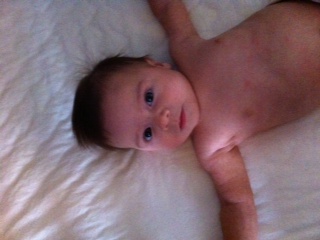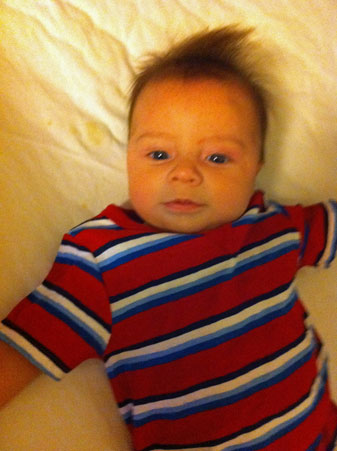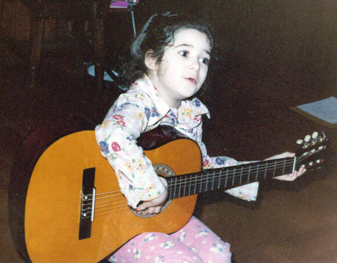The blogosphere has responded vigorously to Ross Douthat’s recent NY Times editorial, Can Liberal Christianity Be Saved? In the piece, Douthat repeats a familiar conservative argument that mainline church membership is declining because what we offer is too indistinguishable from secular liberal politics. Now, I’m skeptical that doctrine should be put to a popularity contest in this fashion. There are just as many evangelical mega-churches that pander to their congregation with prosperity-gospel preaching and American jingoism, as there are liberal churches that massage the ears of the aging Democrats in the pews. But I have long shared Douthat’s concern that churches lose their unique “value-add” when they downplay the actual living presence of God in human affairs.
An interesting gloss on this editorial comes from Fare Forward, a new journal of arts and religion started by a group of young Dartmouth grads. Taking its title from T.S. Eliot’s “Four Quartets”, Fare Forward appears to have a conservative/orthodox but interdenominational perspective. Andrew Schuman’s sympathetic response to Douthat’s argument includes a definition of liberal Christianity that got me thinking that I don’t fit well in either camp:
…In his response to Douthat’s column, theologian Steve Holmes helpfully clarifies the root of liberal Christianity. His characterization of liberal Christianity, and much of the discussion below, is particularity apt as a description of European liberal theologians, but it does not, perhaps, fully capture the nuances of on-the-ground American liberal Christianity in, say, the civil rights era. Nevertheless, Holmes’ response serves as a useful starting point for discussion. He puts forward two core commitments for liberal Christianity. The first is a dedication to take seriously the challenges coming from modern philosophy, namely Kant’s rejection of knowledge of the noumenal world and the hermeneutical skepticism of Biblical higher criticism – both of which cast serious, if not fatal, doubt upon traditional accounts of God’s revelation in Scripture. The second is a commitment to a new grounding for religion (in the place of revelation) based on Schleiermacher’s “shared human religious experience.”
But here’s the problem: a religious reason founded in human experience, instead of revelation from God, will always struggle to retain its primacy over social identities and agendas. By virtue of its epistemology, such grounding is first concerned with human realities (i.e. social realities), and then divine realities. It is firstly anthropological, then theological. In other words, liberal Christianity will struggle to keep its religious reason for existence central because the core of its approach to faith is based first in self-examination and inference, not examination of the eternal realities of revealed truth.
In his work The Priority of Christ, theologian Fr. Robert Barron places at the center of liberal theology the concern with some “grounding experience deemed to be transcultural” instead of “the stubbornly particular Christ.” This move, for Fr. Barron, necessarily resulted in a lower Christology, in which Jesus is no more than “a symbol for, or exemplification of, a universal religious sensibility.” This low Christology had the ironic effect of reducing theology’s ability to engage with the world. As Fr. Barron puts it:
“It is precisely the epistemic priority of Jesus Christ, the Word made flesh, that warrants the use of philosophical and cultural tools in the explication and propagation of the faith, since these means come from and lead to that very Word. Because Jesus Christ is the Logos incarnate–and not simply another interesting religious figure among may–signs of his presence and style are to be found everywhere, and he can relate non-conpetitively to them. The paradox is this: the lower the Christology, the more problematic the dialogue with philosophy and other cultural forms becomes; the higher the Christology, the more that conversation is facilitated.”
And so liberal theology, in grounding itself in experience, anthropology, and a symbolic Jesus, empties itself, over time, of the theological resources necessary to dialogue with culture and philosophy, and sustain social reform…
Much to unpack here! “The eternal realities of revealed truth” is the kind of phrase I used to wield until, say, 2008, and that now makes my oppression-detector go “ping”. How humbling. More about that momentarily.
My second reaction was, I guess I’m not a liberal Christian, because I don’t define my difference from the conservatives along the natural/supernatural axis, but rather the diversity/unity axis. The rationalism of liberal Christians has pained me because it invalidates my experiences of God’s revealed presence. At several key moments in my life, I have felt love and wisdom coming to me from outside, in a way that the liberal philosophies summarized in this quote simply cannot accommodate. I also worry that liberal intellectual skeptics in the pulpit discourage needy people from seeking out this life-changing power, and make them ashamed to talk about and believe their experiences of it.
At the same time, the “eternal verities” rhetoric is too often code for a privileged subgroup’s resistance to hearing revelations from the margins. It allows the current priestly class to pretend that the Bible is not a human document produced and interpreted by societies where only certain types of people were allowed to speak.
In theory, as Schuman seems to be saying, the particularity of Christ’s revelation should make Christians more sensitive to cultural diversity, as opposed to an imperialistic liberalism that homogenizes by pretending to be transcultural. (Stanley Fish’s version of this critique of liberalism paved the way for my conversion in the late 1990s…full story coming in the next post in my “40 Years of Book Love” series.) However, at least in America, conservative Christians are not exactly known for their cross-cultural sensitivity. Either the doctrine doesn’t have the effects he’s claiming, or Christians are failing to act on its implications.
Moreover, what is the goal of this dialogue? Is it simply to translate our own “eternal verities” into language that will be more palatable to nonbelievers, so that eventually they believe exactly like us? Or are we also open to changing our beliefs in response to their testimony about what the Spirit has shown them?
I think I must be a postmodernist Christian, neither liberal nor conservative, skeptical of the ahistorical universalizing claims of both “reason” and “Scripture/tradition”. Belief in revelation is what distinguishes me from liberals. Where I part with the conservatives is in my belief that revelation comes from plural sources and evolves over time, and that we must be sensitive to the real-world inequalities embedded in and reinforced by interpreters’ authority.
One last question: is it even coherent, psychologically, to say that a religious belief is “founded in human experience, instead of revelation from God”? How does revelation get into our brains except through someone’s experience? How is this not simply code for “trust the experience of people who lived 2,000 years ago, but not your own”?
This is not a rhetorical question. I really would like to find a non-cynical answer. Readers, your thoughts?


